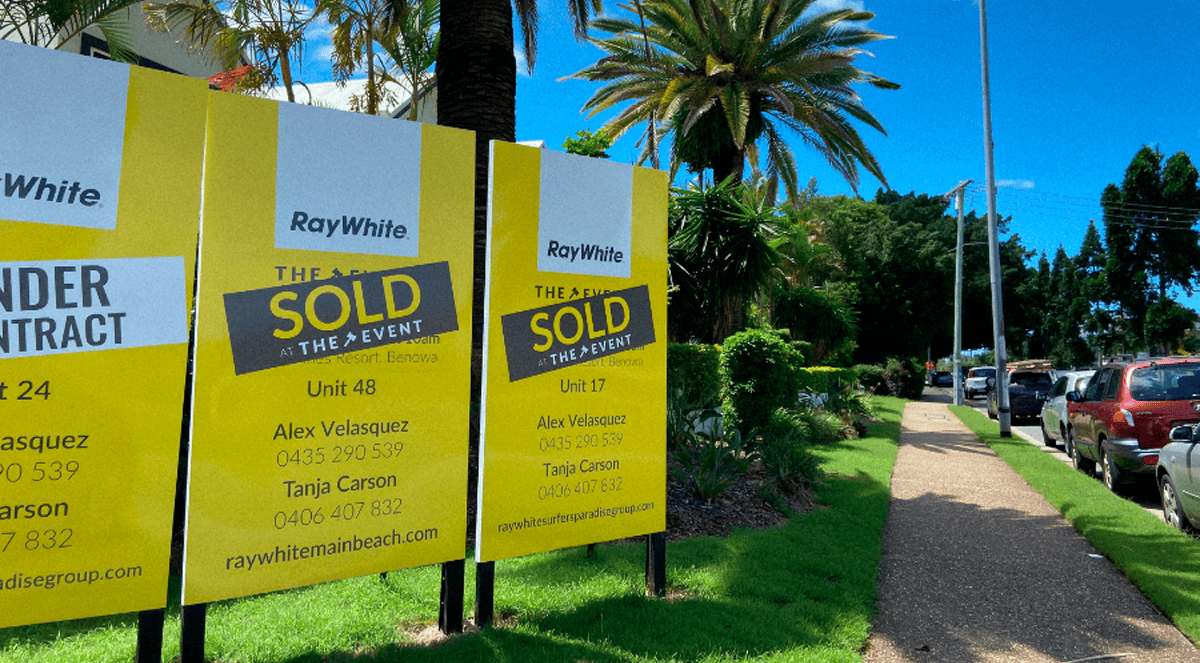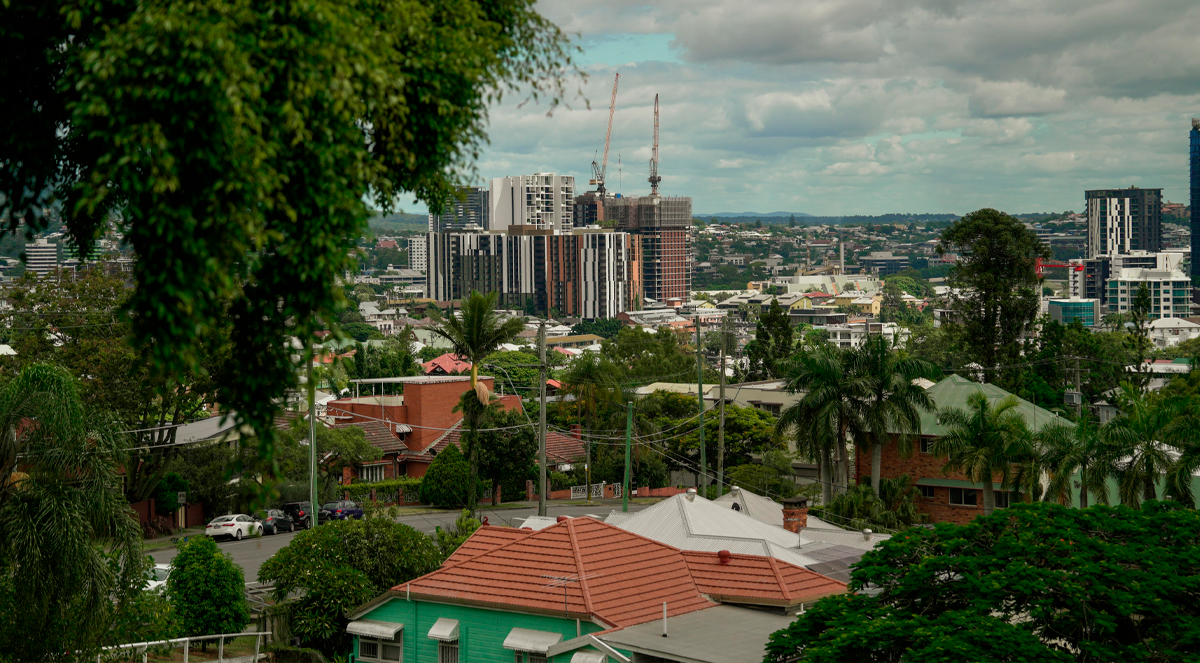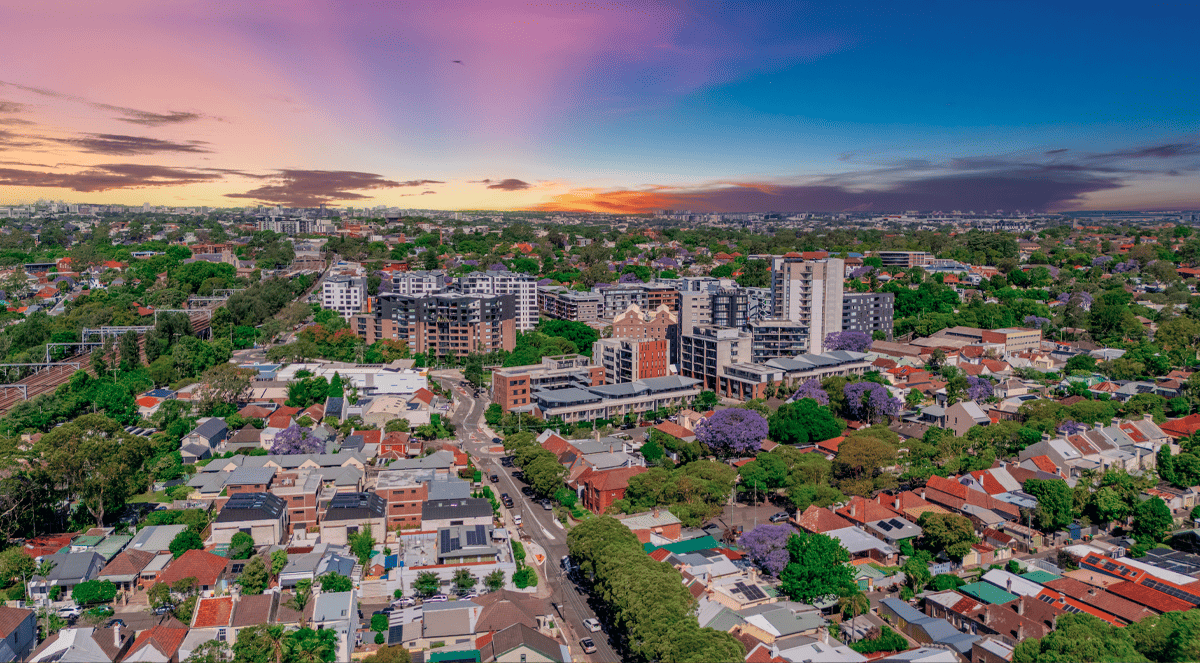
KEY POINTS
- Over 60% of Australian households consist of just one or two people, yet most of the country’s housing is built as three- or four-bedroom dwellings
- Smaller homes (studio or one-bedroom homes) make up just 6% of stock, raising concerns about inefficiency in meeting real housing needs
- Analysts say housing efficiency could improve with reforms like replacing stamp duty with a broad-based land tax and including the family home in pension asset tests to encourage downsizing
Australia’s housing market is facing a structural mismatch: while most households are made up of just one or two people, the bulk of our housing stock is designed for families.
New analysis from property research group Cotality reveals that more than 60% of Australian households are either single-person homes or couples without children.
Yet the vast majority of dwellings across the country are three or four-bedroom houses – often too big for the people living in them.
The details
“There is a stark mismatch between who lives in our homes and the kinds of homes we’re building,” says Eliza Owen, Cotality’s Head of Research.
“Couples without children and people living alone now make up the majority of households, but our housing system is still largely geared towards the ‘traditional’ family.”
According to the Australian Bureau of Statistics (ABS), only around 30% of Australian households are families with dependents.
By contrast, 31% are couples without children, and 27% are single-person households.
In other words, 61% of all households are made up of just one or two people, yet the largest share of homes are three-bedroom dwellings.
At the other end of the scale, one-bedroom and studio homes – which would suit many of these households – account for just 6% of Australia’s housing stock.
“Of the lone-person households in Australia, around 40% are aged 65 and over,” Ms Owen explains.
“And among couples without dependents, almost half are older Australians too.
“This raises questions about how well our housing system supports ageing households who might prefer smaller, lower-maintenance homes,” she says.
Ironically, a better fit between the size of households and Australia’s existing housing stock could solve the current housing crisis in one fell swoop.
Reserve Bank Assistant Governor Sarah Hunter has pointed out how, if Australia’s current average household size of around 2.5 people edged up to 2.8 persons (as it was in the 1980s), “we would need 1.2 million fewer dwellings to house our current population – no small difference.”
This comes as the Albanese government is struggling to deliver 1.2 million new homes in five years to ease the current housing squeeze.
Bigger homes still dominate
If Australia has more small households, why are we still building big homes?
One answer lies in lifestyle.
Spare bedrooms are increasingly used as home offices, hobby rooms or guest spaces, especially in an era of hybrid work.
Many couples without children also keep larger homes because they plan to start a family.
Eliza Owen says geography is another important factor.
“As new suburbs are built further out on the city fringes, people want more amenities in their homes – whether that’s a gym, workspace or even a theatre room.”
ABS figures show new housing approvals are shifting - albeit slowly - towards smaller dwellings, with apartments and townhouses making up 40% of approvals in the past decade – up from 37% in the previous ten years.
But demand for larger homes remains strong.
Cotality’s data shows four-bedroom homes have seen the strongest price growth nationally – averaging 8.7% annually over the past five years – compared to just 3.7% for studio or one-bedroom dwellings.
“Part of the reason people favour larger homes is financial,” Ms Owen explains.
“Bigger dwellings have delivered higher capital growth, so buyers and investors see them as a safer bet.”
Could tax reform help?
Still, there are questions about how efficiently Australia’s housing is being used.
At the 2021 Census, for example, there were more two-person households living in three-bedroom homes (about 1.3 million) than there were three- or four-person households in similar dwellings (around 1.1 million).
“That tells us a lot of space is being held by smaller households,” Cotality’s Eliza Owen says.
“Meanwhile, families with children – who might need that space more – can find it harder to access.”
So, are there ways to better align housing supply with demand?
One option, Ms Owen suggests, is tax reform.
Abolishing stamp duty and replacing it with a broad-based land tax could make it easier – and cheaper – for people to downsize.
It would also encourage older Australians with large family homes to move into smaller properties.
“Stamp duty is a big barrier to people moving,” Ms Owen says.
“If you replace it with an annual land tax, it changes the incentives.
“Instead of being penalised when you move, you face ongoing costs the more land you hold – which makes downsizing more attractive.”
Research last year by the e61 Institute found that if stamp duty was replaced by a broad-based land tax in just one state - New South Wales - about 100,000 more people would move homes each year.
Most of these would be older Australians - single people or couples - downsizing to smaller homes that better met their needs as they aged.
Reforming pension rules is another possibility.
Including the family home in pension asset tests could encourage wealthier retirees to unlock housing equity and move to smaller, more suitable dwellings.
At the same time, supply-side reforms are slowly reshaping the housing market.
More well-located apartments are being delivered in Australia’s biggest cities, potentially giving smaller households more suitable options.
“Building better-quality apartments in the right locations is part of the answer,” Eliza Owen says, “but without demand-side changes, we may not see the take-up that’s needed.”
The road ahead
For now, the mismatch remains.
Australia’s demographic reality is shifting towards smaller households, yet our housing stock is still dominated by large family homes.
While many Australians enjoy the extra space – for work, leisure or a future family – this housing imbalance also creates inefficiencies.
Families who need more room may struggle to find it, while retirees and single-person households often remain in dwellings larger than they require.
“Ultimately, the way we tax housing and design our cities shapes how efficiently we use our homes,” Ms Owen says.
“If we want to better match supply with demand, reform is needed – and the sooner we start, the better.”
Stay Up to Date
with the Latest Australian Property News, Insights & Education.




.png?width=292&height=292&name=Copy%20Link%20(1).png)
 SIGN UP FOR FREE NEWSLETTER
SIGN UP FOR FREE NEWSLETTER





.jpg?width=1920&height=1080&name=Warning%2c%20You%20Might%20Be%20Facing%20Higher%20Taxes%20Soon%20(1).jpg)





.png?width=1920&height=1080&name=Rate%20Drops%20Signal%20BIGGEST%20Property%20Boom%20in%20DECADES%20(1).png)

.jpg?width=1920&height=1080&name=Labor%20vs%20Liberal%20These%20Housing%20Policies%20Could%20Change%20the%20Property%20Market%20Forever%20(1).jpg)
.jpg?width=1920&height=1080&name=QLD%20Slashes%20Stamp%20Duty%20Big%20News%20for%20Investors%20%26%20Home%20Buyers%20(1).jpg)
.jpg?width=1920&height=1080&name=Trump%20Just%20Slapped%20Tariffs%20%E2%80%93%20Here%E2%80%99s%20What%20It%20Means%20for%20Australia%20(1).jpg)
.jpg?width=1920&height=1080&name=Federal%20Budget%202025%20More%20Debt%2c%20No%20Housing%20%E2%80%93%20Here%E2%80%99s%20What%20You%20Need%20to%20Know%20(1).jpg)
.jpg?width=1920&height=1080&name=Australias%20Housing%20Crisis%20is%20about%20to%20get%20MUCH%20Worse%20(New%20Data%20Warns).jpg)
%20(1).jpg?width=1920&height=1080&name=Australias%20RENTAL%20CRISIS%20Hits%20ROCK%20BOTTOM!%20(2025%20Update)%20(1).jpg)
%20(1).png?width=1920&height=1080&name=Is%20Adelaide%20Still%20a%20Good%20Property%20Investment%20(2025%20UPDATE)%20(1).png)
.jpg?width=1920&height=1080&name=RBA%20Shocks%20with%20Rate%20Cuts!%20What%E2%80%99s%20Next%20for%20Property%20Investors%20(1).jpg)
%20(1).jpg?width=1920&height=1080&name=I%20Predict%20The%20Feb%20Rate%20Cut%20(My%20Price%20Growth%20Prediction)%20(1).jpg)
.png?width=1920&height=1080&name=Why%20Property%20Prices%20Will%20Rise%20in%202025%20Market%20Predictions%20(1).png)
.jpg?width=1920&height=1080&name=Why%20Investors%20Are%20Choosing%20Apartments%20Over%20Houses%202%20(1).jpg)
.jpg?width=1920&height=1080&name=Why%20Rate%20Cuts%20Will%20Trigger%20A%20Property%20Boom%20(1).jpg)
.jpg?width=1920&height=1080&name=Retire%20On%202Million%20With%20One%20Property%20(Using%20SMSF).jpg)
.jpg?width=1920&height=1080&name=4%20Reasons%20Why%20You%20Should%20Invest%20in%20Melbourne%20Now%20(1).jpg)
%20(1).jpg?width=1920&height=1080&name=Old%20Property%20vs%20New%20Property%20(Facts%20and%20Figures%20Revealed)%20(1).jpg)
%20(1).jpg?width=1920&height=1080&name=Will%20The%20New%20QLD%20Govt%20Create%20a%20Property%20Boom%20or%20Bust%20(My%20Prediction)%20(1).jpg)
%20Scott%20Kuru%20(1).jpg?width=1920&height=1080&name=Inflation%20Hits%20Three-Year%20Low%20(Will%20RBA%20Cut%20Rates%20Soon)%20Scott%20Kuru%20(1).jpg)
.jpg?width=1920&height=1080&name=How%20to%20Buy%20Investment%20Property%20Through%20SMSF_%20The%20Ultimate%20Guide%20(1).jpg)
.jpg?width=1920&height=1080&name=Victoria%20Slashes%20Stamp%20Duty%20Melbourne%20Set%20to%20Boom%20Scott%20Kuru%20(1).jpg)
.png?width=1571&height=861&name=Are%20Foreign%20Buyers%20Really%20Driving%20Up%20Australian%20Property%20Prices%20(1).png)
.jpg?width=1920&height=1080&name=The%20Single%20Factor%20That%20Predicts%20Property%20Growth%20Regions%20(1).jpg)
%20Scott%20Kuru%20(1).jpg?width=1920&height=1080&name=My%20Prediction%20On%20Rates%20%26%20Negative%20Gearing%20(Market%20Crash)%20Scott%20Kuru%20(1).jpg)

-1.png?width=1920&height=1080&name=Major%20Banks%20Cut%20Rates%20Will%20RBA%20Follow%20Suit%20(Sept%20Rate%20Update)-1.png)
%20Scott%20Kuru-1.png?width=1920&height=1080&name=Rate%20Cut%20Coming%20What%20New%20Zealands%20Move%20Means%20for%20Australia%20(Sept%20Prediction)%20Scott%20Kuru-1.png)
%20(1).jpg?width=1920&height=1080&name=Buy%20when%20the%20interest%20rates%20are%20high!%20(Why%20you%20must%20buy%20now!)%20(1).jpg)
.jpg?width=1920&height=1080&name=Carms_Revised%20Taxes%20Due%20Aug%209%20YT%20Thumbnail02%20(1).jpg)
.jpg?width=1920&height=1080&name=Carms_Too%20Little%20Too%20Late%20Aug%207%20YT%20Thumbnail01%20(1).jpg)









.jpg?width=1920&height=1080&name=Carms_Rate%20Drop%20In%20July%20Jun%2010%20YT%20Thumbnail02%20(1).jpg)
.jpg?width=1920&height=1080&name=Carms_Own%20a%20Property%20V6%20Jun%205_YT%20Thumbnail%20(1).jpg)









.png?width=1920&height=1080&name=Artboard%201%20(3).png)






.jpg?width=1920&height=1080&name=YT%20thumbnail%20%20(1).jpg)

